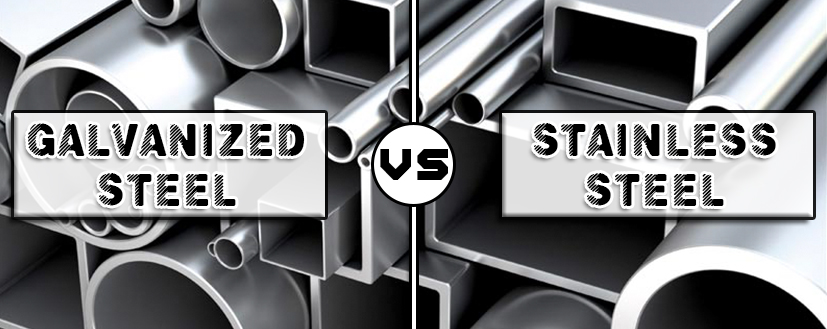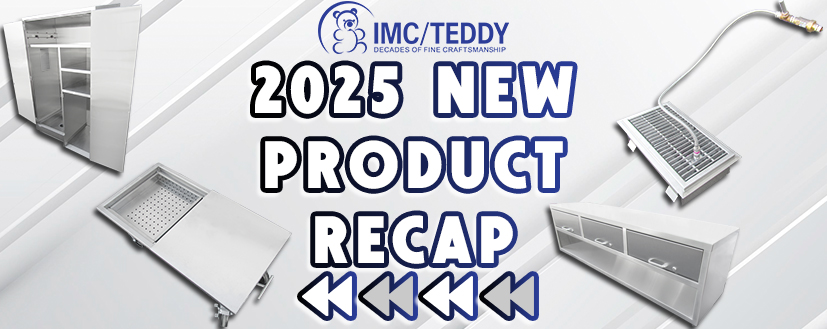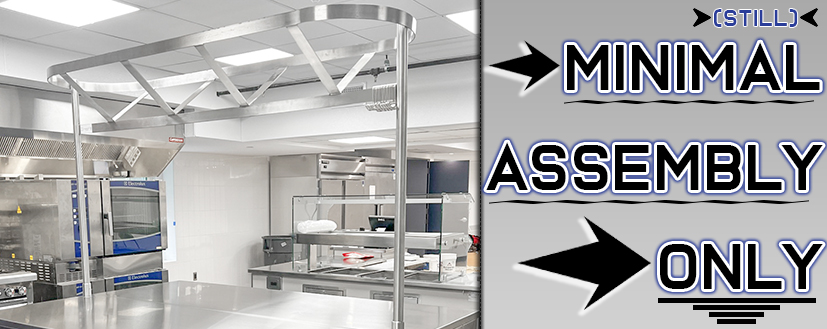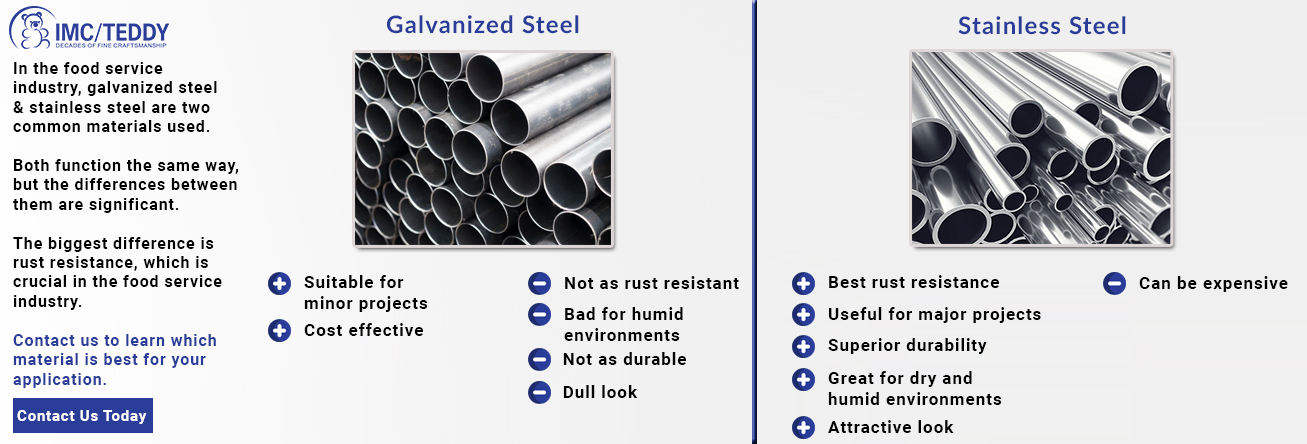Galvanized Steel vs. Stainless Steel: Which is Better?

When talking about the food service industry, there are two main players in the steel department: galvanized steel & stainless steel. Their functions are primarily the same & they may look similar to the untrained eye, but the differences are vast & impactful. So, which one is better to use?
In this article, we’ll break down the positives & negatives of both galvanized & stainless steel. We’ll then determine the ultimate winner in this showdown. Let’s begin.
About Galvanized Steel
Galvanized steel is known for being coated in a layer of zinc, which attempts to prevent the steel from rusting. The layer is exceptionally thin & could present a problem with rusting if the surface is damaged. If moisture is present, galvanized steel is simply not the most desirable choice.
Typically, galvanized steel is suitable for very minor projects/parts such as small ductwork, fasteners & railways. Overall, galvanized is considered a cheaper & more readily available material. This makes it an attractive choice for budget-conscious customers.
About Stainless Steel
Stainless steel has been mixed with chromium. Chromium is known to be a superior anti-rusting agent compared to zinc. Therefore, stainless steel is a better choice for environments that see a great amount of moisture. Even if stainless steel does manage to get scratched, the corrosion resistance is still intact around the affected area.
The truth of the matter is rust is seen as non-sanitary & unacceptable in the food service industry. Stainless steel is better suited for major food service equipment such as floor troughs, cabinets & worktables due to the better rust resistance.
When comparing costs, stainless steel is more expensive than galvanized steel.
And the Winner is…
For the food service industry, stainless steel is simply the better option. The superior durability & corrosion-resistant properties put it over the top.
Furthermore, stainless steel is more aesthetically pleasing than galvanized steel. Stainless steel has that shiny, bright, silver color while galvanized steel has a dull, gray surface.
IMC/Teddy manufactures all of its equipment from Type 300 series stainless steel. The better strength & anti-rust properties of stainless steel are a major positive when using it in the food service industry. With the inherent long service life, you will not have to worry about replacements or malfunctions. For IMC’s full range of stainless steel products, click here.






Thanks for helping me understand that galvanized steel is coated with a layer of zinc that prevents the material from rusting. I should choose galvanized kitchenware in that matter if I want to make sure that it will last for a long time. It will also be safer if our food will not be exposed to corroded parts.